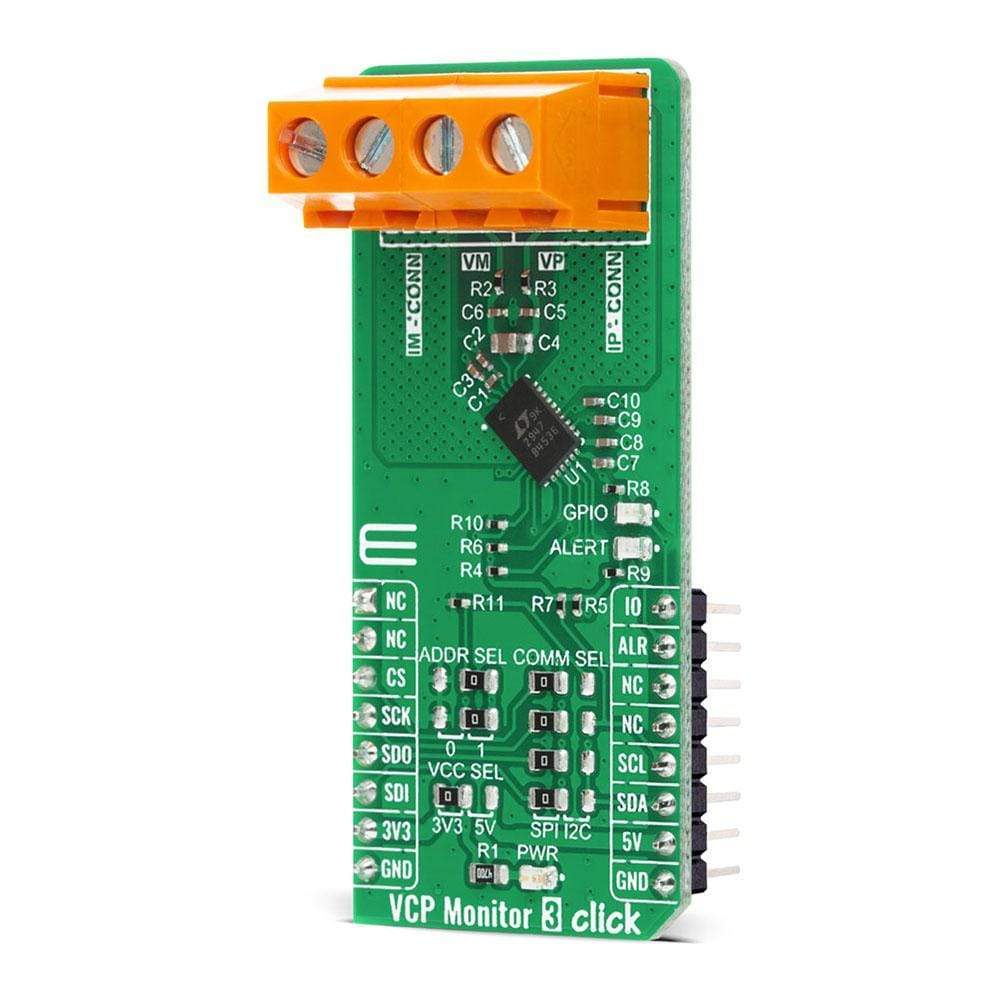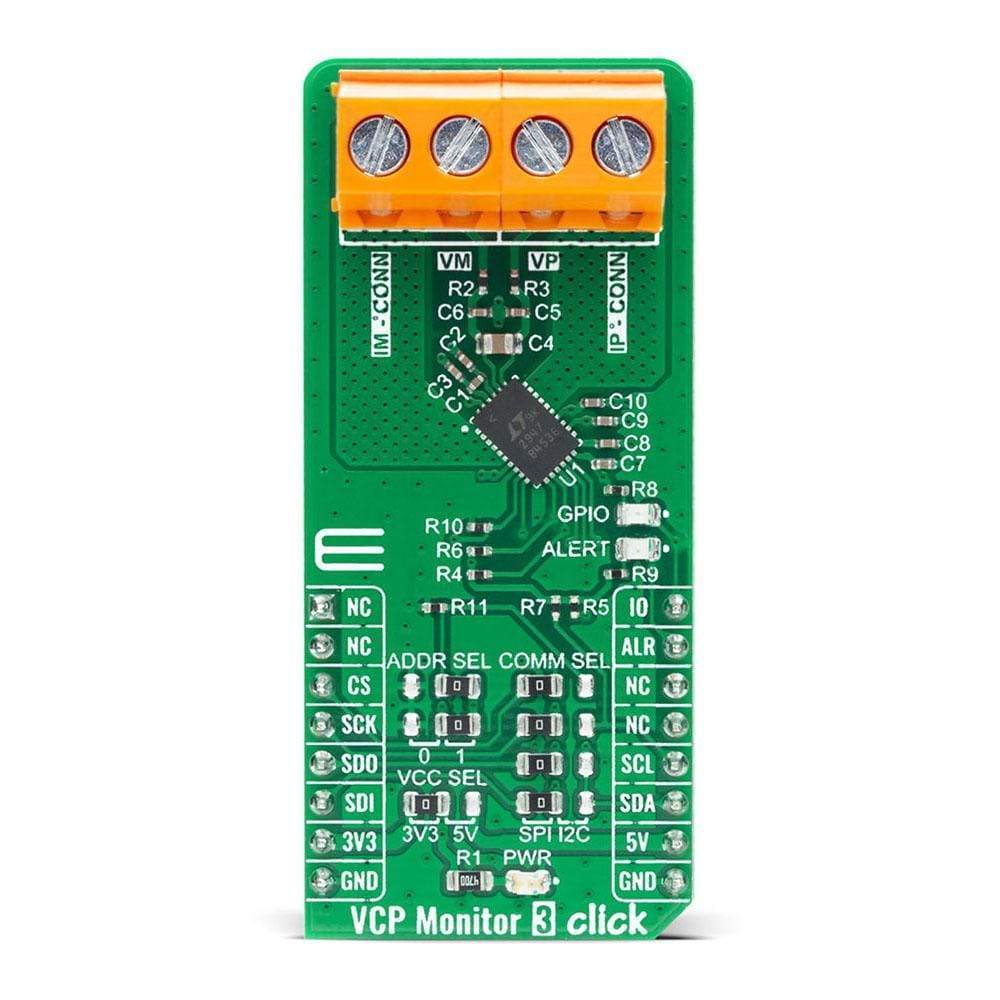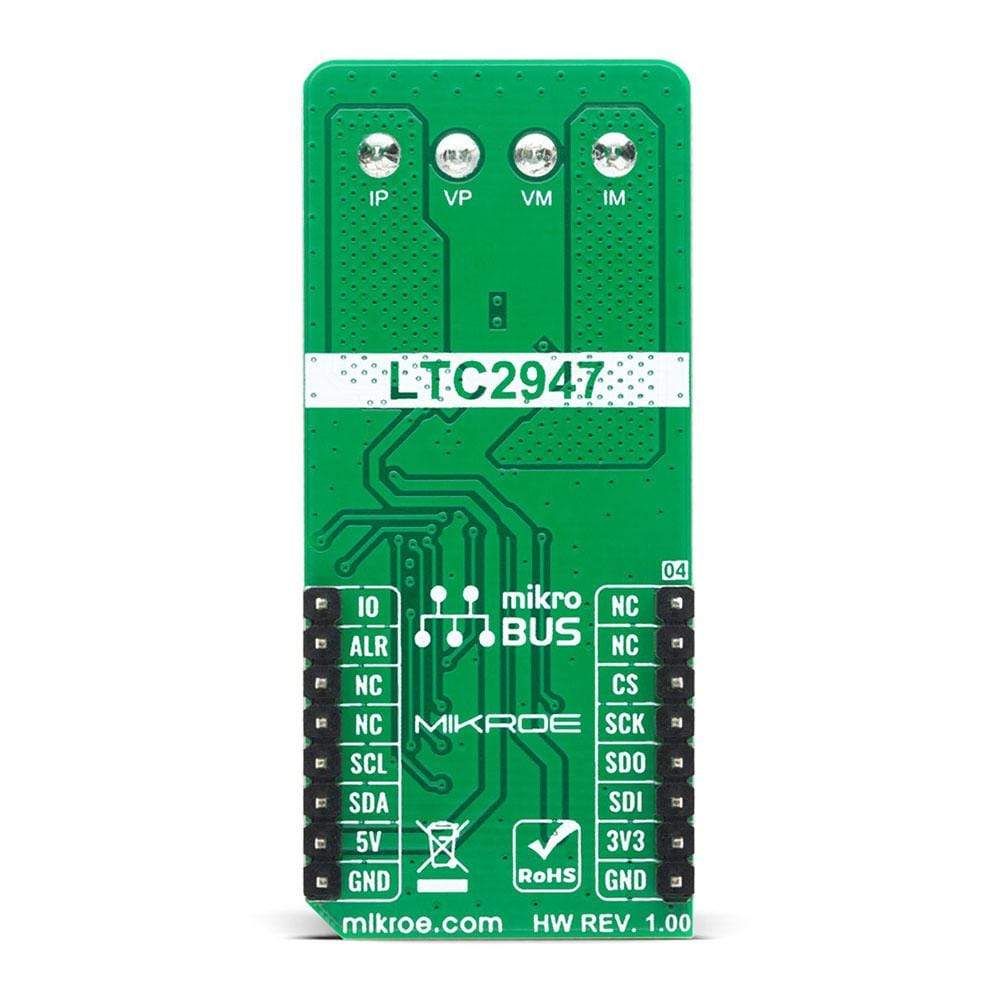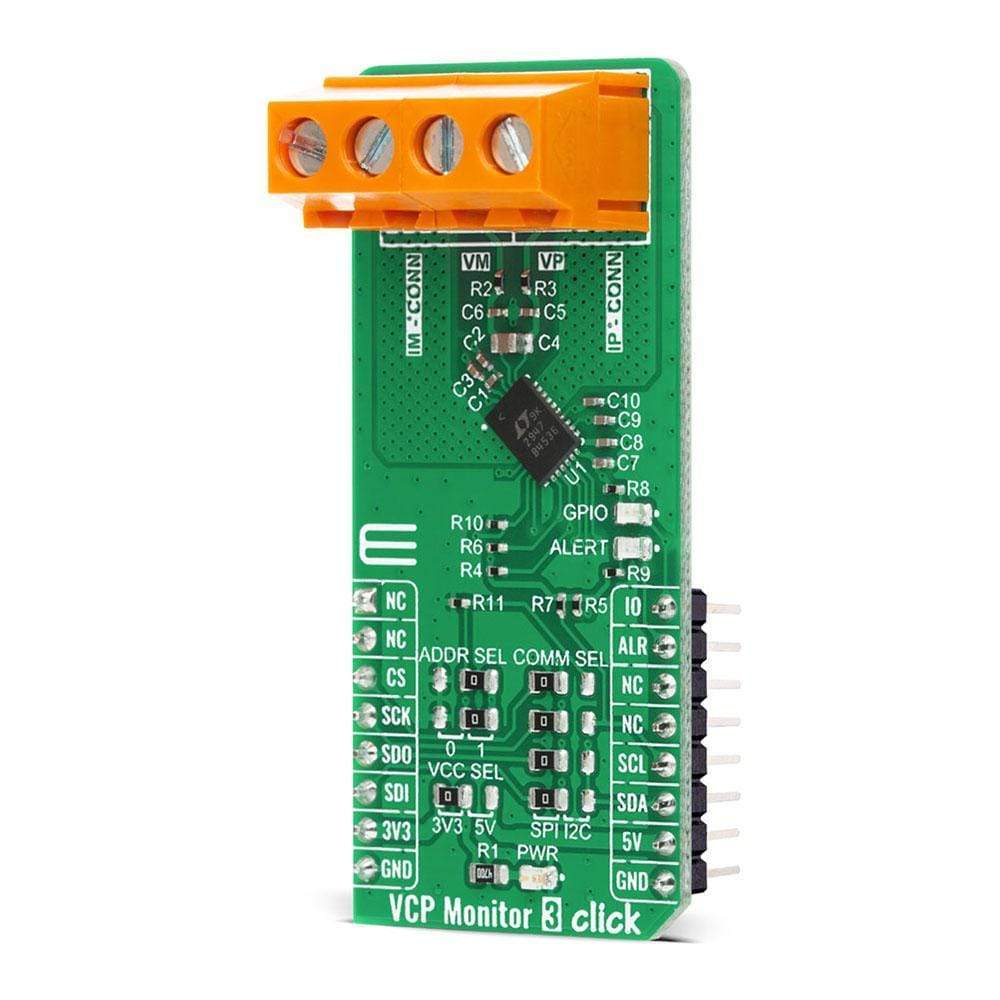
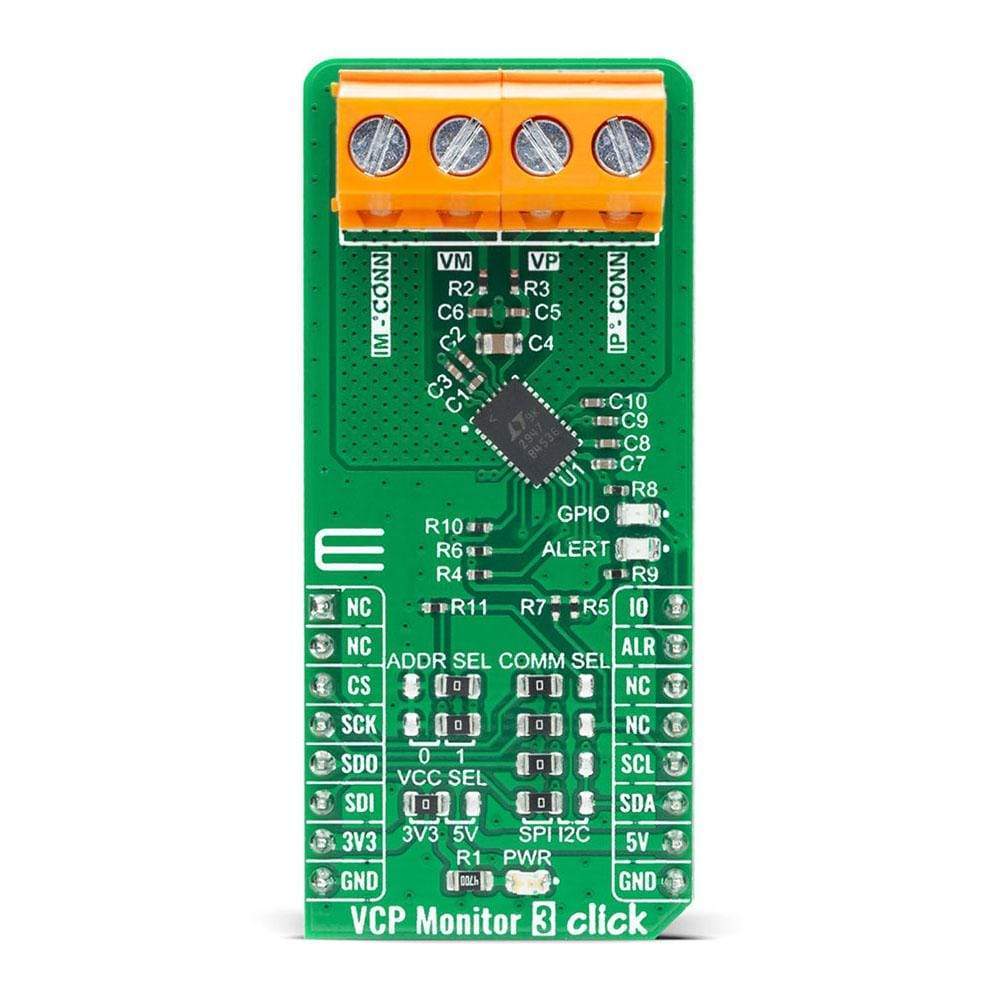
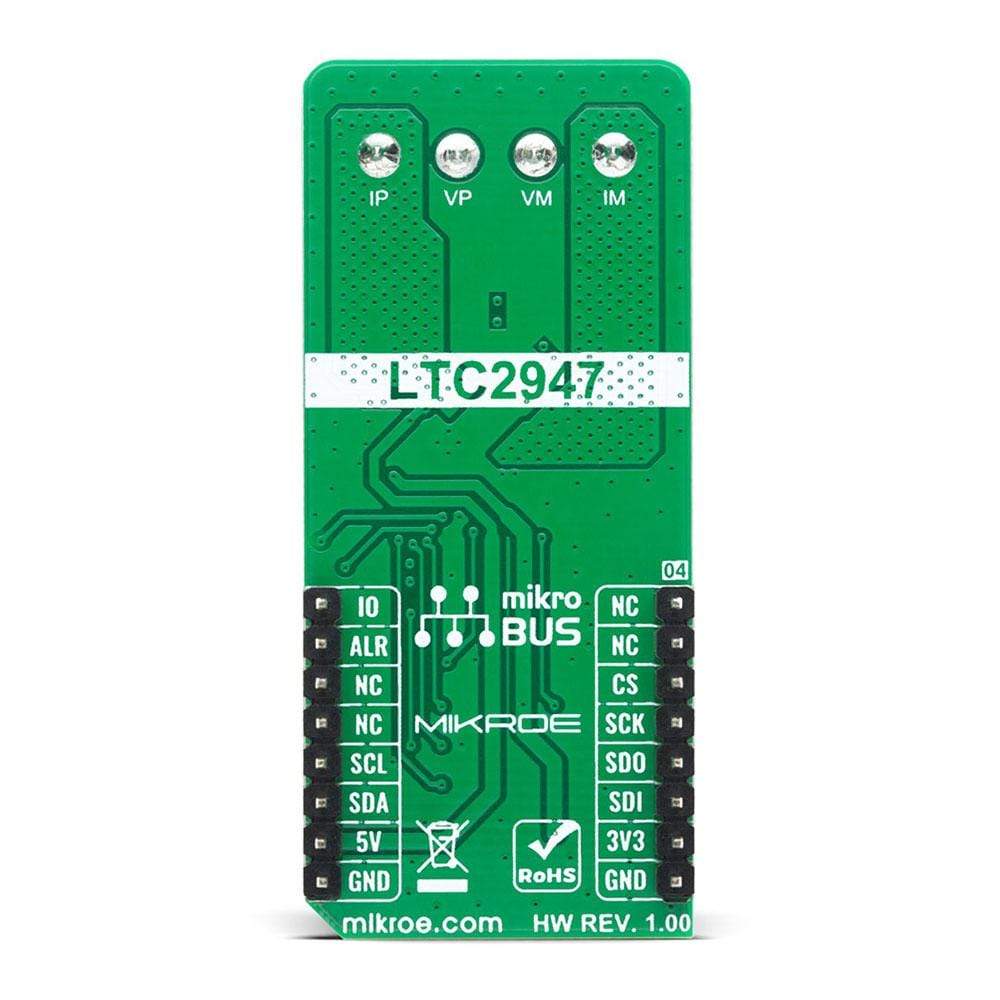
Overview
The VCP Monitor 3 Click Board™ is a high precision Voltage, Current and Power measurement Click Board™ with an input capable of taking up to 15V. It features the LTC2947, from Analog Devices, a high precision power and energy monitor with an internal sense resistor supporting up to ±30A. Three internal no latency delta-sigma ADCs ensure accurate measurement of voltage and current, with up to 0.5% voltage and 1% current accuracy while high-bandwidth analogue multiplication provides precise power measurement in a wide range of applications. An internal 300μΩ, temperature-compensated sense resistor minimizes efficiency loss while enabling high accuracy current measurement over the full temperature range. All measured values are stored in internal registers accessible via the selectable I2C or SPI interface. All these features make VCP Monitor 3 Click ideal for use in applications such as industrial measurements, electric vehicles, photovoltaic systems, telecom infrastructure, servers, and more.
The VCP Monitor 3 Click is supported by a mikroSDK compliant library, which includes functions that simplify software development. This Click Board™ comes as a fully tested product, ready to be used on a system equipped with the mikroBUS™ socket.
Downloads
Le VCP Monitor 3 Click Board™ est un Click Board™ de mesure de tension, de courant et de puissance de haute précision avec une entrée capable de prendre jusqu'à 15 V. Il est équipé du LTC2947, d'Analog Devices, un moniteur de puissance et d'énergie de haute précision avec une résistance de détection interne prenant en charge jusqu'à ±30 A. Trois ADC delta-sigma internes sans latence garantissent une mesure précise de la tension et du courant, avec une précision de tension jusqu'à 0,5 % et de courant de 1 %, tandis que la multiplication analogique à large bande passante fournit une mesure de puissance précise dans une large gamme d'applications. Une résistance de détection interne de 300 μΩ compensée en température minimise la perte d'efficacité tout en permettant une mesure de courant de haute précision sur toute la plage de températures. Toutes les valeurs mesurées sont stockées dans des registres internes accessibles via l'interface I2C ou SPI sélectionnable. Toutes ces fonctionnalités font du VCP Monitor 3 Click l'outil idéal pour une utilisation dans des applications telles que les mesures industrielles, les véhicules électriques, les systèmes photovoltaïques, les infrastructures de télécommunications, les serveurs, etc.
Le VCP Monitor 3 Click est pris en charge par une bibliothèque compatible mikroSDK, qui comprend des fonctions qui simplifient le développement logiciel. Cette Click Board™ est un produit entièrement testé, prêt à être utilisé sur un système équipé du socket mikroBUS™.
| General Information | |
|---|---|
Part Number (SKU) |
MIKROE-4222
|
Manufacturer |
|
| Physical and Mechanical | |
Weight |
0.025 kg
|
| Other | |
Country of Origin |
|
HS Code Customs Tariff code
|
|
EAN |
8606027380198
|
Warranty |
|
Frequently Asked Questions
Have a Question?
Be the first to ask a question about this.

